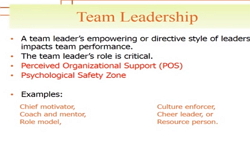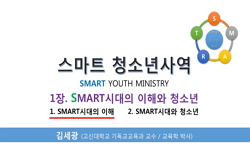본 논문의 목적은 캠퍼스 사역의 쇠퇴 또는 소멸을 가져오는 캠퍼스 사역의 특수한 난점을 극복하고 진리의 절대성을 부인하는 포스트모던 대학생들을 변화시킬 수 있는 리더십을 발견함으...
http://chineseinput.net/에서 pinyin(병음)방식으로 중국어를 변환할 수 있습니다.
변환된 중국어를 복사하여 사용하시면 됩니다.
- 中文 을 입력하시려면 zhongwen을 입력하시고 space를누르시면됩니다.
- 北京 을 입력하시려면 beijing을 입력하시고 space를 누르시면 됩니다.
캠퍼스 사역의 지속을 위한 리더십 연구 : 포스트모던 시대의 X세대와 밀레니엄 세대의 대학생 사역 = A Study on the Leadership For the Sustained Campus Ministry:Campus Ministry On Postmodern Generations:the Generation X and the Millennial Generation
한글로보기https://www.riss.kr/link?id=T8960518
- 저자
-
발행사항
[]: 베뢰아대학교, 2002
-
학위논문사항
학위논문(석사) -- 베뢰아대학원 대학교 , 신학과(Th. M.) 선교신학 , 2002
-
발행연도
2002
-
작성언어
한국어
- 주제어
-
KDC
235.000
-
발행국(도시)
대한민국
-
형태사항
ix, 94 p..
- 소장기관
-
0
상세조회 -
0
다운로드
부가정보
국문 초록 (Abstract)
본 논문의 목적은 캠퍼스 사역의 쇠퇴 또는 소멸을 가져오는 캠퍼스 사역의 특수한 난점을 극복하고 진리의 절대성을 부인하는 포스트모던 대학생들을 변화시킬 수 있는 리더십을 발견함으로써 캠퍼스 사역의 지속 방안을 강구하는 것이다. 먼저 캠퍼스 사역이 성경에 근거한 사역임을 알아보았다. 캠퍼스 사역은 예수 그리스도의 지상명령의 "모든 족속"에 포함된 대학생들을 대상으로 한다. 또한 캠퍼스 사역의 대상인 대학생들은 캠퍼스가 위치하는 지역 출신들뿐만 아니라 여러 지역과 여러 나라와 민족과 여러 방언에서 온 사람들이므로 캠퍼스 사역은 지리적인 면에서 볼 때 행1:8의 "예루살렘과 온 유대와 사마리아와 땅끝"에 이르는 사역이며 World A 지역 사람에게도 복음을 전할 수도 있는 등 세계선교의 기능도 감당하는 사역이다. 그러므로 캠퍼스 사역은 성경적이고 무시되어서는 안 되는 중요한 사역이다.
예수 그리스도는 3년의 사역으로 땅 끝까지 이르는 사역을 완성하지 않고 그 미완의 사역을 제자들에게 맡겼는데, 핵심적인 소수 그룹을 사도로 삼고 권능을 부여하고 함께 있게 하면서 리더들로 키운 다음에 미완의 사역을 위임하여 사역을 지속시키는 방법을 사용하였다. 예수 그리스도의 지상명령대로 제자를 삼는 제자는 리더를 키워서 사역을 위임함으로써 사역을 지속시키는 사람이다. 이러한 원리는 사도 바울에게도 이어지는데, 바울은 디모데를 제자 삼았고, 그에게 딤후2:2에서 "충성된 사람들"이 "또 다른 사람들"을 제자 삼을 수 있게 하라고 함으로써 사역 지속의 원리인 리더십 훈련이 이루어졌음을 알 수 있다.
캠퍼스 사역도 지속되어야 하는데 사역의 지속에 제도적인 난점이 있다. 대학생들의 학년과 연령 구조상 고학년 학생들이 지도적 위치에 있게 되는데, 대학생들은 보통 2-4년의 학업 과정을 마치면 캠퍼스를 떠나게 된다. 이는 잘 훈련 받아서 후배들을 제자 삼을 수 있는 핵심 리더들이 사역지인 캠퍼스를 떠난다는 것을 의미하며, 리더의 부재나 부족으로 전도와 양육이 제대로 이루어지지 않아서 캠퍼스 사역이 쇠퇴나 소멸로 이어짐을 뜻한다. 캠퍼스 사역의 지속을 위해서는 예수 그리스도의 사역 지속 원리인 핵심 리더들을 양성하는 것이 필요하다. 이 핵심 리더들은 학교를 졸업하고 떠나는 문제를 극복한 사람들이어야 하는데, 캠퍼스 출신으로서 핵심적인 리더 훈련을 받고 X 세대와 밀레니엄 세대를 잘 이해하여 적절하게 대응할 수 있으며, 대학을 졸업하여 캠퍼스 사역에 전념할 수 있는 전문사역자가 합당해 보인다. 이러한 전문사역자를 키우기 위해서는 충성스러운 리더들 중에서 선발하여 예수가 소그룹의 제자들을 특별히 양육한 것처럼 훈련시켜야 할 것이다.
대학생 복음화 운동사를 볼 때에도 예수 그리스도의 사역 지속의 원리가 적용되고 있음을 볼 수 있다. 대각성 운동과 애즈베리와 브라운우드의 부흥을 통해서는 좀 특이한 리더십 훈련 과정으로 부흥의 확산을 볼 수 있었다. 세계선교에 지대한 영향력을 주었던 학생지원자 운동은 대학생들에게 꿈을 심어주는 것과 동시에 리더십 훈련을 시행함으로써 성공적인 선교사역을 이루었다. 그러나 이 운동은 지도층의 잦은 교체로 말미암은 힘의 지속성의 파괴와 사회와 경제 문제로 눈을 돌려서, 제자 양성을 통한 세계복음화 사명을 놓쳐버림으로써 소멸하게 되었다. 젊은이 교회 회귀운동은, 급격하게 변하는 젊은이들을 교회로 끌어들여서 정착시키는 방법이 적절하지 않을 때에 교회들에는 젊은이들이 거의 없게 되지만, 젊은이들을 잘 이해하여 그들이 교회에서 만족감과 존재 의미를 느끼도록 할 때에는 큰 성과가 나타남을 보여주었다.
지금의 대학생들은 포스트모던 시대의 X 세대와 밀레니엄 세대이다. 이들은 진리의 절대성을 인정하지 않고 진리를 상대적으로 보고 다양성을 추구하는 세대이다. 패러다임의 전환을 대표하고 다른 문화 코드를 가진 이들에게 복음을 전하면서 캠퍼스 사역의 지속을 위해서는 이에 대한 적절한 대응이 필요하다. 포스트모던 세대 대학생들이 체험을 통해 진리를 알게 하는 방법이 그 해결책이다. 한국의 대표적인 캠퍼스 선교단체 즉 UBF와 네비게이토와 CCC와 CBA의 전도방식과 새신자 변화 방법을 비교할 때, 일대일 양육과 소그룹 중심의 모임이라는 공통적인 면도 있고 각각 나름대로의 효과적인 다른 사역 방법을 가지고 있다. 그런데 절대적인 진리를 인정하지 않는 포스트모던 시대의 X 세대와 밀레니엄 세대에게는 예수 그리스도와 사도들이 행했던 것과 같이 영적인 체험을 하게 함으로써 절대적인 진리를 알도록 하는 것이 중요한 전략이라고 판단된다. 그런 면에서 볼 때 CBA가 대학생들에게 복음을 전하여 예수를 영접하게 한 다음에 성령을 받게 하여 방언을 말하게 하고 예수 이름으로 귀신을 쫓아내고 병을 고치는 사역이 예수와 사도들의 사역의 모습에 더 근접한 것으로 보인다. 포스트모던 세대 대학생들이 체험함으로써 진리를 확신하는 결과가 나타나고 있다. 그러므로 CBA의 사역과 같은 사도적 리더십에 근접한 리더십 전략이 포스트모던 시대의 캠퍼스 사역 지속을 위해 적절한 전략으로 판단된다.
다국어 초록 (Multilingual Abstract)
This thesis aims at exploring ways of continuing Campus Ministry through overcoming its unique challenges and through finding the appropriate type of leadership that can change postmodern college students who deny the absoluteness of truth. First of a...
This thesis aims at exploring ways of continuing Campus Ministry through overcoming its unique challenges and through finding the appropriate type of leadership that can change postmodern college students who deny the absoluteness of truth. First of all, this paper suggests that Campus Ministry is based on the holy Bible. Campus Ministry targets all college students who are included in the "all nations" of the Great Commission. In addition, college students are not only from the neighboring region of the college but also from various nations, peoples and tongues. Therefore, in terms of geography, Campus Ministry fulfills the goal of World Mission since it is done "in Jerusalem, and in all Judea and Samaria, and to the ends of the earth" and since it also preaches the gospel to the people in World A. In this sense, Campus Ministry is truly biblical and should not be overlooked.
Jesus Christ did not finish his mission during his three years of public life but entrusted the unfinished task to his disciples. He first designated a small group of people as apostles, gave them authority, let them be with him, taught them to become leaders and then entrusted the unfinished task. This is how Jesus fulfilled the continuity of his mission. Those who follow the Great Commission of Jesus Christ make disciples to entrust them the mission. One good example of continued mission is the case of the apostle Paul. He made Timothy a disciple and asked him to entrust the things he heard to "reliable men who will also be qualified to teach others(Timothy 2:2)." By doing so, leadership training, the important principle of mission continuity, was kept being implemented.
Campus Ministry also needs to be continued but it has inherent challenges. In most cases junior or senior students are in the leadership position since they are older and trained in the campus. However, when these leaders complete their courses of two or four years, they have to leave the campus, which means that those who are well trained and able to make younger students disciples have to leave their place of ministry. This often leads to lack or absence of leaders to carry out evangelism and nourishment and to the decline in or even termination of Campus Ministry. In order to prevent this, it is required to nurture core leaders who stay in the campus after graduation in accordance with the principle of mission continuity. A graduate who has been trained as a core leader and well understands the Gen. Xers and millennials will be appropriate to become a professional minister who can focus only on Campus Ministry. In order to foster a professional minister, it is necessary to select and train a small number of devoted leaders as Jesus did with his disciples.
Also in the Student Evangelical Movement, we can find the principle of mission continuity applied For example, student movements such as the Great Awakening and the Asbury Revival of 1970 and the Brownwood Revival of 1995 accomplished the spread of revival through unique processes of leadership training. In the case of the Student Volunteer Movement that had a great influence on the world mission, the missionary work was successfully achieved through inspiring college students and implementing leadership training at the same time. However, this movement was terminated when the mission was not continued due to frequent change of the leadership and when it turned its eyes on the social and economic problems, thus failing the mission of evangelizing world through making disciples. As for the Christian Endeavor, it showed that a great number of youths, otherwise would leave church, would stay when they were well understood, satisfied and led to find the reason of their existence in the church.
College students these days are mostly the Gen. Xers and millennials of the postmodern era and they pursue relativeness and diversity rather than absoluteness of truth. They represent the paradigm shift from modernism to postmodernism and they have different cultural codes compared with previous generations. Considering this, Campus Ministry nowadays needs an approach that is suitable for evangelizing these postmodern era students. One such approach is to let college students know the truth through experience.
When CBA(Campus Berea Academy) and other major missionary groups in Korea such as UBF(University Bible Fellowship), the Navigators Korea, and CCC(Korea Campus Crusade for Christ) are compared with one another in terms of the ways of evangelizing, nurturing, etc., all the groups are common in that they are small group-oriented and carry out one to one teaching. They also have their own effective systems of ministry. However, as for the Gen. Xers and millennials who do not acknowledge the absolute truth, having spiritual experiences can be a good strategy to make them know the absolute truth. This is a strategy being employed in CBA where evangelized students are led to receive the Holy Spirit, speak in new tongues, drive out demons and heal disease, which is close to the approaches of Jesus and his apostles. And through these experiences, students become sure of truth. Therefore, it is thought that this leadership strategy of such as CBA's ministry like a apostolic leadership is truly appropriate in the postmodern era for the continuity of Campus Ministry.
목차 (Table of Contents)
- 목차
- 국문초록 = vi
- I. 서론 = 1
- A. 문제 제기 및 연구 목적 = 1
- B. 연구 방법 = 2
- 목차
- 국문초록 = vi
- I. 서론 = 1
- A. 문제 제기 및 연구 목적 = 1
- B. 연구 방법 = 2
- C. 연구 동향 = 3
- II. 캠퍼스 사역의 근거와 원리 = 5
- A. 캠퍼스 사역과 사역 지속의 원리의 성경적 근거 = 5
- B. 캠퍼스 사역 지속의 원리와 리더십에 관한 사례 = 6
- III. 포스트모던 캠퍼스 사역 지속의 원리와 리더십 = 9
- A. 캠퍼스 사역의 성경적 근거 = 9
- B. 성경에 나타난 사역 지속의 원리와 리더십 = 14
- 1. 예수의 사역 지속의 원리와 리더십 = 15
- 2. 바울의 사역 지속의 원리와 리더십 = 19
- 3. 결론 = 21
- C. 대학생 복음화 운동사에 나타난 사역 지속의 원리와 리더십 = 22
- 1. 학생 선교 지원자 운동(the Student Volunteer Movement)의 성장과 쇠퇴 = 23
- a. SVM의 성장과 쇠퇴 = 23
- b. SVM에 대한 평가 = 26
- 2. 미국의 제1차 대각성 = 27
- 3. 애즈베리 부흥운동과 브라운우드의 부흥운동 = 30
- a. 애즈베리(Asbury) 부흥운동(1970년) = 30
- b. 브라운우드(Brownwood)의 부흥운동(1995년) = 31
- c. 두 부흥에 대한 평가 = 32
- 4. 젊은이 교회 회귀운동(Christian Endeavor, 1881-1918) = 37
- a. 젊은이 교회 회귀운동 배경과 성공 = 37
- b. 젊은이 교회 회귀운동의 쇠퇴 = 40
- c. 젊은이 교회 회귀운동에 대한 평가 = 40
- 5. 결론 = 42
- D. 포스트모던 시대의 캠퍼스 사역 지속을 위한 원리와 리더십 = 44
- 1. 캠퍼스의 특수성 = 44
- a. 포스트모던 세대: X 세대와 밀레니엄 세대 = 44
- b. 대학 생활 기간은 중요한 결정을 하는 시기 = 49
- c. 단기간에 리더십 양성이 되어야 하는 캠퍼스 사역 구조 = 50
- d. 핵심 리더들이 사역지를 떠나는 캠퍼스 사역 구조 = 52
- 2. 캠퍼스 사역의 지속을 위한 리더 양성 = 54
- 3. 한국 캠퍼스 선교단체들의 리더십 훈련의 내용 비교 = 57
- a. UBF의 전도와 새신자 변화 방식 = 59
- b. 네비게이토의 전도와 새신자 변화 방식 = 63
- c. CCC의 전도와 새신자 변화 방식 = 65
- d. CBA의 전도와 새신자 변화 방식 = 67
- e. 전도와 새신자 변화 방식 비교와 리더십 내용의 차이 = 70
- 4. 캠퍼스 사역의 지속을 위한 바람직한 리더십의 조건 = 73
- 5. 결론 = 79
- IV. 결론 = 81
- 참고문헌 = 84
- ABSTRACT = 91












